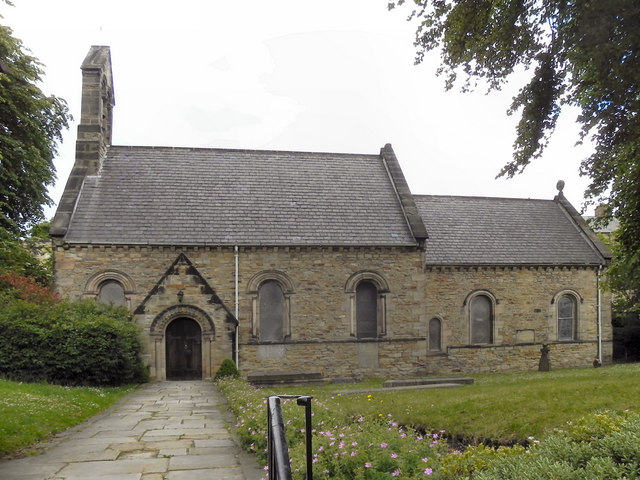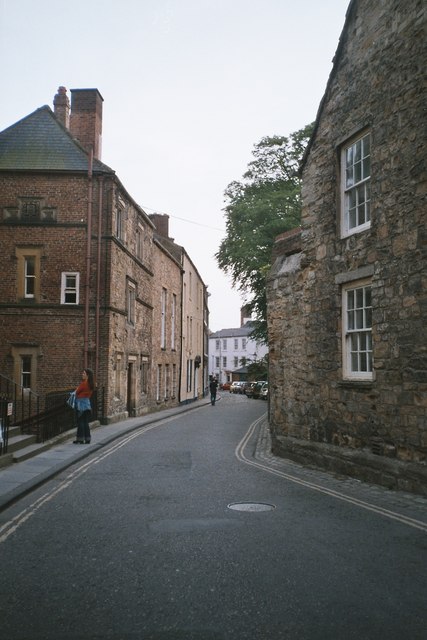Topics > Education > Universities > Durham University > St John's College
St John's College
 St John's College of the University of Durham is mostly based in buildings on South Bailey in the centre of Durham. It was originally founded as a Church of England theological college in 1909. It became a full constituent college of the University in 1919. From 1958 the college was divided into Cranmer Hall (theological) and John's Hall (non-theological). The main building of the college is No. 3 South Bailey (Haughton House). The college has its own chapel: the Church of St Mary the Less.
St John's College of the University of Durham is mostly based in buildings on South Bailey in the centre of Durham. It was originally founded as a Church of England theological college in 1909. It became a full constituent college of the University in 1919. From 1958 the college was divided into Cranmer Hall (theological) and John's Hall (non-theological). The main building of the college is No. 3 South Bailey (Haughton House). The college has its own chapel: the Church of St Mary the Less.St John's College is a college of the University of Durham, United Kingdom. It is one of only two "recognised colleges" of the university, the other being St Chad's. This means that it is financially and constitutionally independent of the university and has a greater degree of administrative independence than the other, "maintained", colleges. However, in order to maintain its status as a recognised college, the university council must approve the appointment of its principal and be notified of changes to its constitution.
St John's is Durham's second smallest college and comprises John's Hall for undergraduate and postgraduate students studying any university course and Cranmer Hall (named after Thomas Cranmer and with its own master or Warden), an Anglican theological college in the open evangelical tradition.
The college's chapel choir has flourished in recent years due to the college's commitment to supporting choral scholarships.
History
Founded as a Church of England theological college in 1909, it became a full constituent college of the university in 1919. In 1958 it was divided into Cranmer Hall theological college and the non-theological John's Hall. The halls have always held to a broadly evangelical tradition.
In 1973 St John's became the first Durham undergraduate male college to admit female students, though Cranmer Hall had been admitting women ordinands since 1966.
St John's was the first Church of England theological college to have both a lay person and a woman as principal (Ruth Etchells).
The college has an advowson (a right to appoint clergy to a parish) over four benefices: Chester-le-Street and Stranton in the Diocese of Durham and jointly with other avowees the benefices of Doddington with Benwick and Wimblington, and St Mark with St Paul, Darlington. Previously, the patron had complete power to appoint the new priest, however that power is now exercised jointly with the local bishop and parish.
Buildings
The college is formed from a number of Georgian houses on the Bailey between Durham Cathedral and the River Wear. The main house is Haughton House, named after Haughton Castle, the seat of the family of William Donaldson Cruddas who were early benefactors of the college and other Christian churches and charities in the north east of England. The houses which make up Cranmer Hall were once owned by the Bowes-Lyon family (the late Queen Elizabeth's family).
The majority of the college buildings are grade II listed, with parts of 3 and 4 South Bailey grade II* listed. Before coming into the possession of St John's, Linton House, no 1 South Bailey, was the main property of St. Chad's College. It is said to have much earlier origins, with the frontage seen today added to an existing timber framed building after the Restoration of the Monarchy.
No 2 South Bailey has distinctive circular "blind" windows which were revealed during a re-rendering in the 1980s. This enabled Martin Roberts, then Durham City's conservation officer, to date the building precisely to the late 17th century.
The illogically interconnected nature of many of the college buildings regularly results in visitors becoming lost. The similarly unusual nature of college stairways, one of which disappears into a solid wall, adds an element of Escher to the architecture.
The college chapel, dedicated to St Mary and known as St Mary the Less, is of Norman origin and was rebuilt in the 1840s and re-ordered at the turn of the 21st century. It became the college chapel in 1919, before which it had been the parish church of the South Bailey. It is still a chapel of ease in the Parish of St Oswald. The chapel is also used by the local Greek Orthodox congregation.
Student life
Owing to its small population, Johnians tend to know one another regardless of year, course or accommodation (all first years and the majority of finalists live in college, with the second years required to find their own accommodation). Elected Freshers Reps are generally well known throughout college thereby giving new Johnians more opportunities for one-on-one interaction, providing a more solid foundation in their first few weeks than in the larger colleges.
St John's participates in a number of sports such as cross country running, mixed lacrosse, rowing, men's football, badminton, hockey and rugby among others. St John's College Boat Club was founded in 1910 and operates out of two boathouses on the River Wear. It also contributes to university theatre, with the Bailey Theatre Company producing Sarah Kane's 4.48 Psychosis in the Epiphany term of 2009 and Arthur Miller's The Crucible in the Michaelmas term of 2008, as well as the annual Summer Shakespeare. This involves an outdoor performance on Library Lawn. In 2008, the performance of Christopher Marlowe's Doctor Faustus won the Durham Student Theatre Award for Best Play.
John's Music Society, founded in 2012, is the governing body for music within college. It regularly puts on large-scale concerts and helps students set up new musical ensembles as well as organising socials and concert trips for its members. It is also in the process of setting up a community choir outreach project.
Senior college figures
List of principals
- 1909–1911 Sidney Nowell Rostron
- 1911–1919 Dawson Dawson-Walker
- 1919–1945 Charles Steel Wallis
- 1945–1953 Ronald Williams
- 1954–1955 G.J. Cumming (acting)
- 1954–1969 Jim P. Hickinbotham
- 1970–1978 John C. P. Cockerton
- 1978–1988 Ruth Etchells
- 1988–1992 Anthony Thiselton
- 1992–1999 David V. Day
- 1999–2006 Stephen Sykes
- 2006–present David Wilkinson
List of wardens
- 1968-1970: John C.P. Cockerton (formerly Chaplain to Cranmer Hall)
- 1971-1979: Tim Yeats
- 1979-1983: Christopher Byworth
- 1983–1992: Ian Cundy
- 1993–1996: John Pritchard
- 1996–2004: Steven Croft
- 2005–2011: Anne Dyer
- 2011–2016: Mark Tanner
- 2017–present: Philip Plyming
Notable alumni
- Richard Adams, pioneer of fair trade and founder of Traidcraft
- Norman Aspin - High Commissioner to Malta
- James Bell, Bishop of Knaresborough, area Bishop for Ripon
- Mark Bryant, Bishop of Jarrow
- Douglas Davies, theologian
- Gavin Hewitt - special correspondent for BBC News
- Nick Ramsay AM, Conservative Assembly Member for Monmouth and Shadow Finance Minister
- Jack Plumley, Sir Herbert Thompson Professor of Egyptology, Cambridge; trained for ordination at St John's college before the theological college was split off into Cranmer Hall
- Richard Blackburn, Bishop of Warrington
- Chris Edmondson, former Bishop of Bolton
- Robert Paterson, Bishop of Sodor and Man
- John Saxbee, former Bishop of Lincoln
- Geoff Pearson, Bishop of Lancaster
- Richard Turnbull, Principal of Wycliffe Hall, Oxford
- Justin Welby, Archbishop of Canterbury
Visit the page: St John's College, Durham for references and further details. You can contribute to this article on Wikipedia.

from https://www.dur.ac.uk/st-john…
St John's College - Durham University
- "....St. John’s College was founded in 1909 as a theological college for the training of Anglican ordinands and matriculated five students. It was not until 1919 that it became a …
Added by
Simon Cotterill
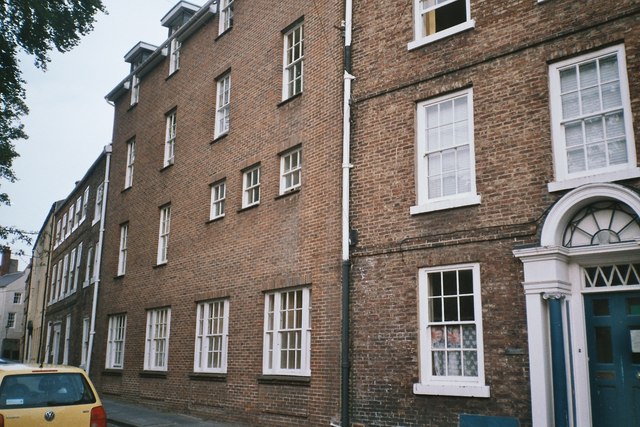
from Geograph (geograph)
St.John's College, Durham University, on South Bailey
Pinned by Simon Cotterill
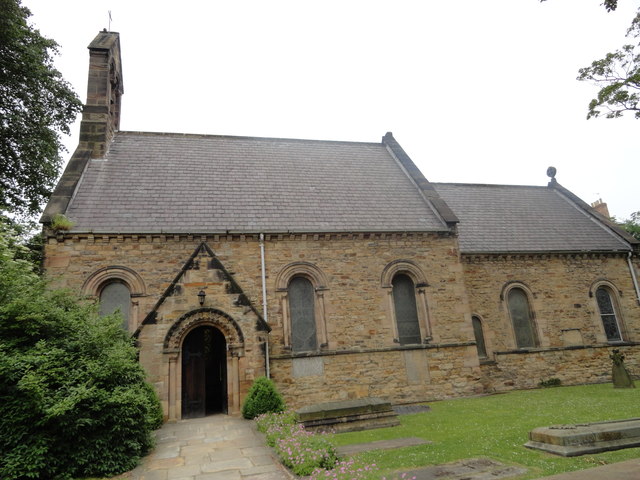
Co-Curate Page
Church of St Mary the Less
- Overview Map Street View The Church of St Mary the Less is located off South Bailey in Durham. It is currently the chapel of St John's College of Durham University. The church was …
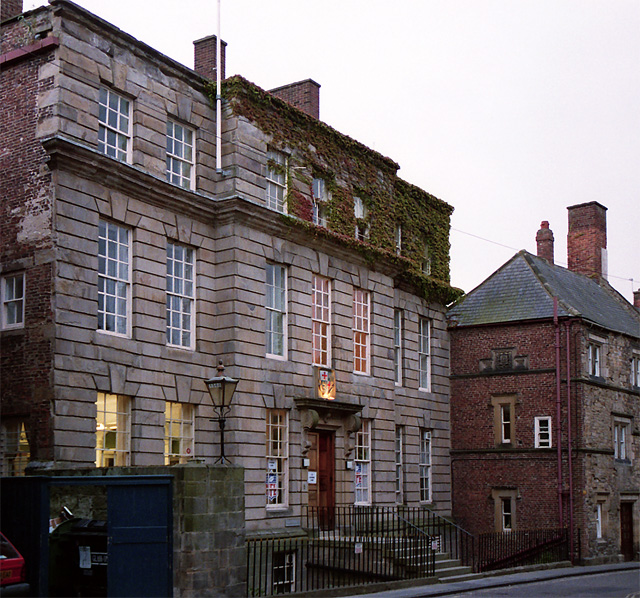
Co-Curate Page
Haughton House, South Bailey
- Overview Map Street View No. 3 South Bailey, is the main building of St John's College, Durham University. The house was originally built in the early 18th century for Sir …

from https://www.durhamworldherita…
St John’s College
- "St John’s College was originally founded in 1909 to train ordinands for the Church of England, and became associated with Durham University in 1923. However, it is independent from the …
Added by
Simon Cotterill

from https://commons.wikimedia.org…
Coat of arms of St John's College Durham
- CC BY-SA 3.0
Added by
Pat Thomson

Co-Curate Page
No. 1, South Bailey, Durham
- Overview Map Street View Linton House is located at No. 1, South Bailey in Durham. The large house dates from the 17th Century. It is said that the frontage seen …


from https://www.dur.ac.uk/st-john…
St John's College - Durham University
- "....St. John’s College was founded in 1909 as a theological college for the training of Anglican ordinands and matriculated five students. It was not until 1919 that it became a …
Added by
Simon Cotterill

from Geograph (geograph)
St.John's College, Durham University, on South Bailey
Pinned by Simon Cotterill

Co-Curate Page
Church of St Mary the Less
- Overview Map Street View The Church of St Mary the Less is located off South Bailey in Durham. It is currently the chapel of St John's College of Durham University. The church was …

Co-Curate Page
Haughton House, South Bailey
- Overview Map Street View No. 3 South Bailey, is the main building of St John's College, Durham University. The house was originally built in the early 18th century for Sir …

from https://www.durhamworldherita…
St John’s College
- "St John’s College was originally founded in 1909 to train ordinands for the Church of England, and became associated with Durham University in 1923. However, it is independent from the …
Added by
Simon Cotterill

from https://commons.wikimedia.org…
Coat of arms of St John's College Durham
- CC BY-SA 3.0
Added by
Pat Thomson

